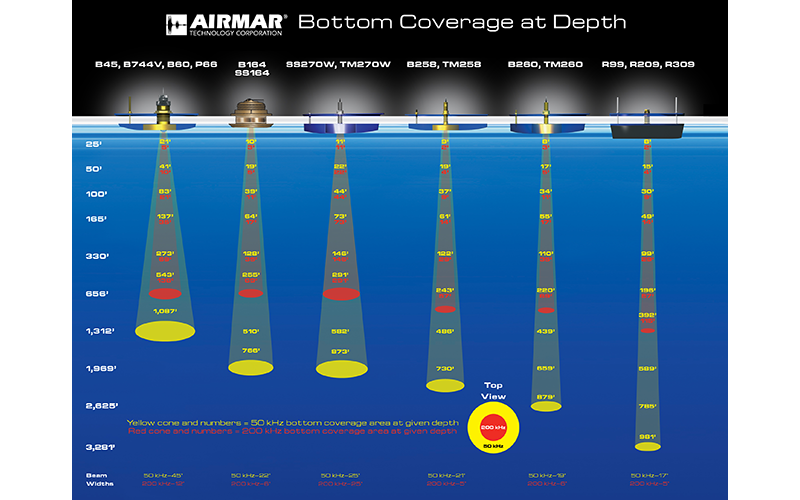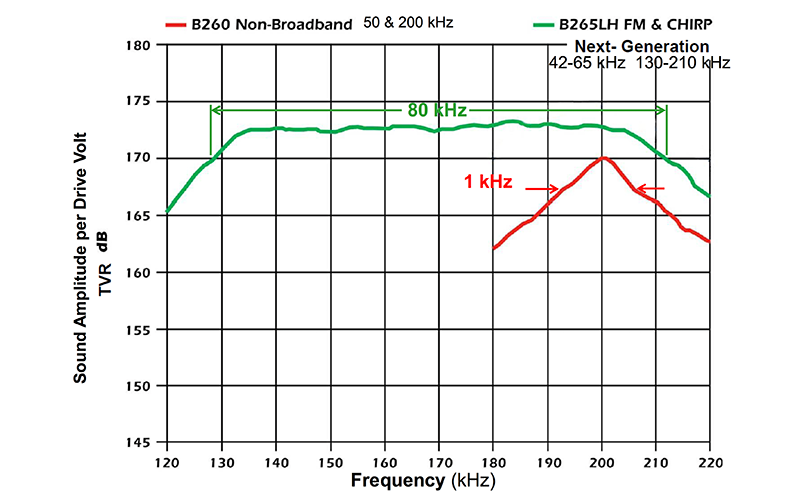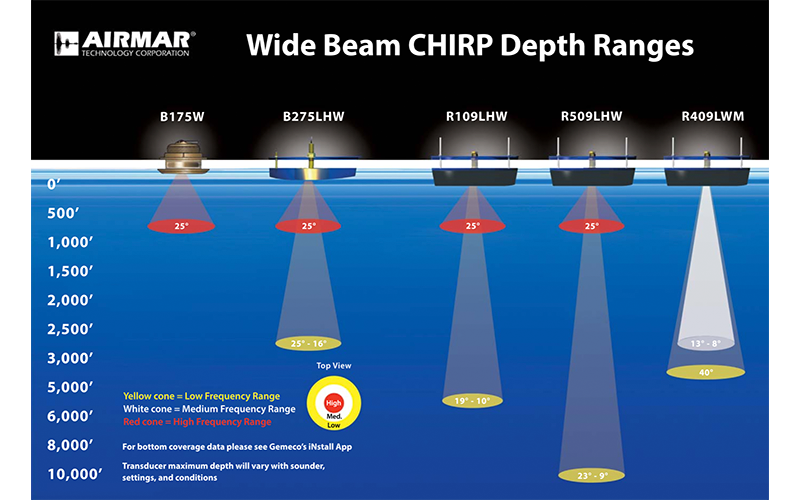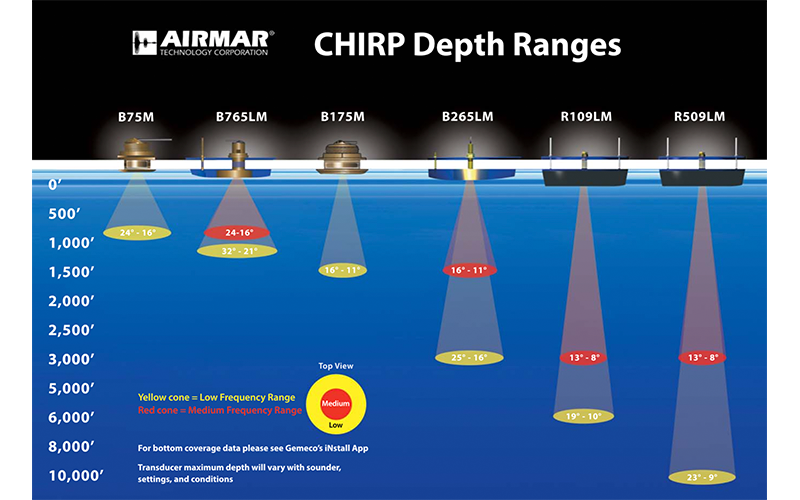
Conventional transducers transmit at one or more fixed frequencies. The models shown in the image above send out signals at both 50kHz (yellow) and at 200 kHz (red).
Higher frequencies such as 200 kHz can differentiate between smaller targets but do not penetrate as far down into the water. Lower frequencies can penetrate to a greater depth but offer less resolution.
The transmitted signals bounce off targets such as fish in the water and are reflected back up to the transducer. A 50/200 kHz sounder or fishfinder combines the returns from the two frequencies to produce a composite image of the water column.
A conventional transducer transmits a high power signal (between 600W and 3kW) but only for a very short period. It then listens for the returned reflections before transmitting the next signal. The total amount of energy transmitted is limited by the nature of the technology.

A CHIRP transducer emits a long-duration signal pulse that sweeps across a wide frequency range. Instead of transmitting at just 50kHz or just 200kHz it covers a band of frequencies.
The diagram above shows the difference between a conventional B260 transducer at 200kHz (red) and a B265 CHIRP transducer that covers the range 130-210kHz (green).
The resulting reflected signal is much more complex than a single-frequency return. The processing of the signal is done in the sounder or fishfinder, which is why a CHIRP transducer will not function with a conventional sounder or fishfinder that does not have this circuitry.
View the 2016 Airmar CHIRP Presentation for a technical analysis of CHIRP technology.

CHIRP technology sees clearly at greater depths and delivers a significantly improved signal to noise ratio with the ability to discriminate small targets against the background of the ocean floor.
It will separate individual fish in a way a conventional transducer cannot manage and provide crisp, detailed images.

